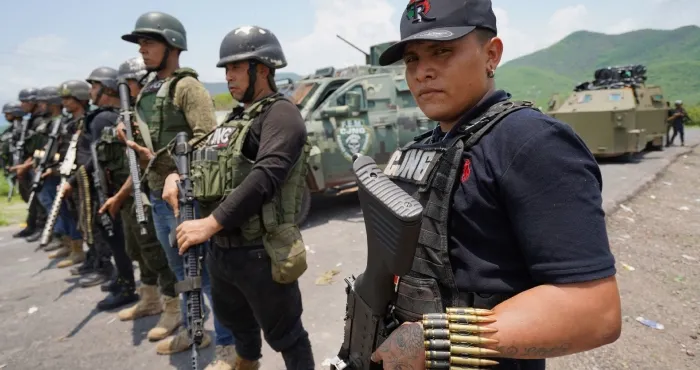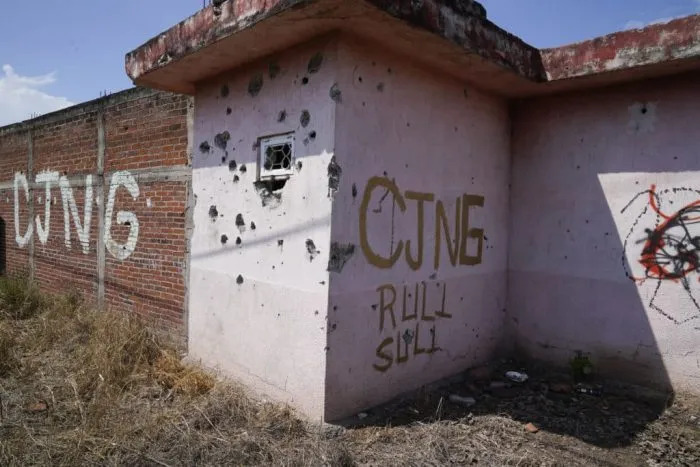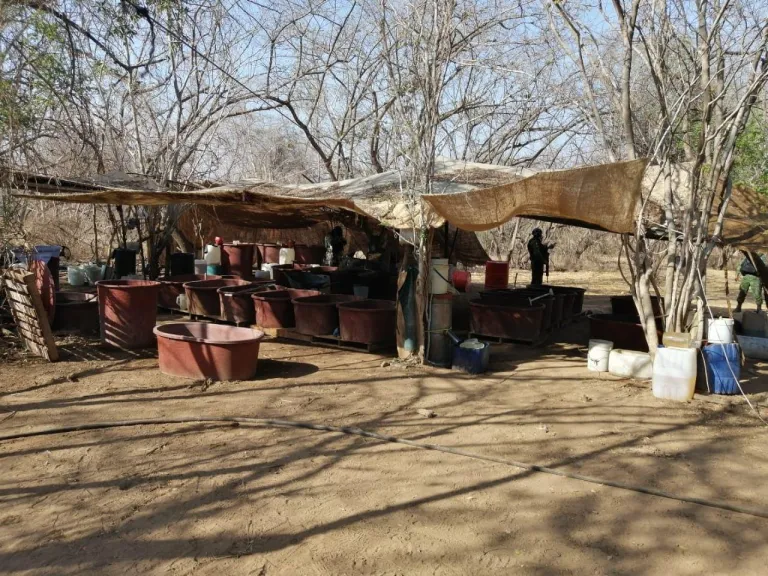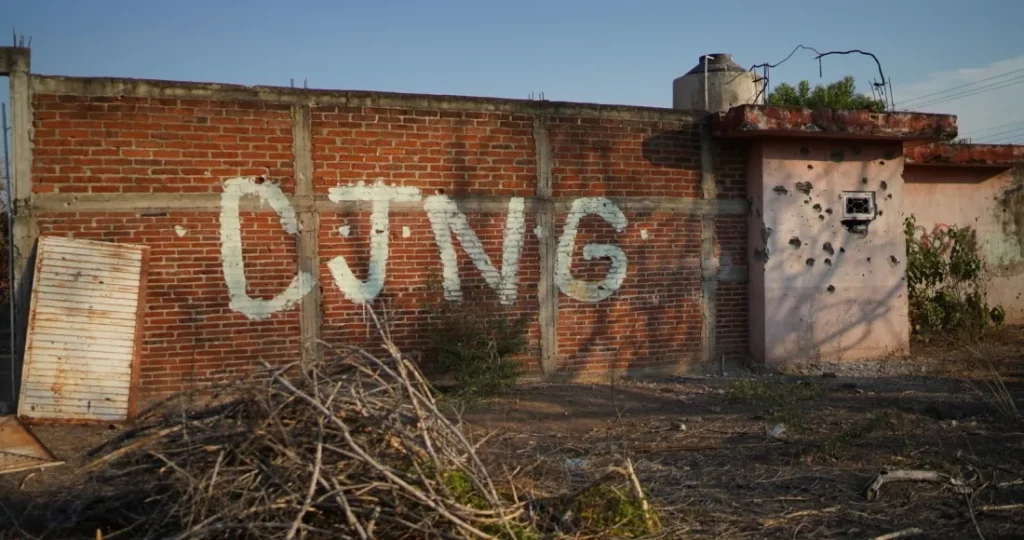
The cartels want control of the territories, analysts agree, and so they expand into colossal battles that include alliances with or exterminations of smaller groups.
By Gardenia Mendoza
Los Angeles, April 13 (La Opinión).– The shooting broke out in an epicenter of grape harvests in the state of Chiapas , in the extreme south of the country. It was not the first time, but things had calmed down and no one expected it to be repeated in the José Castillo Tielemás market, in San Cristóbal de las Casas; one of those tourist cities visited by foreigners attracted by indigenous crafts and traditional food.
But it happened last Holy Saturday, a year after the first incident. The minutes of horror were documented in different videos that were posted on social networks , where people can be seen running in all directions; business doors lashed to close them tightly and only then put their finger on the sore spot.
Even in the last corner of the country, the two most powerful criminal organizations in the country dispute control: the Sinaloa Cartel and the Jalisco Nueva Generación Cartel (CJNG), which have left more than 135,000 dead in the current political administration, and is emerging as the most violent of all time.
The two giants want control of the territories , analysts agree, and so they expand into colossal battles that include alliances with or exterminations of smaller groups.
According to the map of the report “Mexico: Organizations of Organized Crime and Drug Trafficking” , prepared by the US Congressional Research Service, it warns that the CJNG is currently dominant in Baja California Sur, Nayarit, Jalisco, Colima and Querétaro . While the Sinaloa Cartel is dominant in Sinaloa and Durango . The rest of the country they fight in a bloody affront that goes from Quintana Roo to Baja California; from Sonora to Zacatecas; from Oaxaca to Chiapas.
The dispute includes attacks on civilians such as in the Chiapas market or the dismembered bodies in small rural towns: places, where a few years ago it was “unthinkable” to see shocking scenes of beheaded men on display and human butchery in the style of films from medieval Europe neither it was possible to see burned cars and stores; experiment bombings and shootings against civilians, children, women, and the elderly.

What does explain the increase in rivalry between the two cartels? For some analysts of insecurity and violence, such as Rubén Aguilar, founder of Afan International Consultant, the escalation is the product of the current strategy that seeks to give a different focus to the frontal “war” launched in 2006 by then President Felipe Calderón and followed by Enrique Peña. President Andrés Manuel López Obrador explains his crime policy in two colloquial phrases that have become famous: “Hugs and no bullets” and “You must not use violence, because it generates more violence.”
However, for the analyst Aguilar, the leaders of the big cartels understand that they are not going to be persecuted and attacked by the State security forces and they want to enjoy that situation in the territories where they operate.
“The current president’s proposal (of non-confrontation) is very attractive to them. He tells them that they must not use violence because they have an open space to carry out their activities ”.
For other observers, such as Eduardo Guerrero, from Lantia Consultants, a security analysis agency for more than a decade, what the current government does not want are direct confrontations that lead to more killings, with massive extrajudicial executions. For other observers, such as Eduardo Guerrero of Lantia Consultores, a security analysis agency for more than a decade, what the current government does not want is direct confrontations that lead to more mass killings, with mass extrajudicial executions. Guerrero believes the problem is multi factorial and goes a while back. He cites, for example, the strategy of some governors to make pacts with criminal organizations and allow them to impose candidates.
“In Lantia we had a list of mayoral candidates, in the most recent elections, with alleged criminal ties, there were between 30 and 40 candidates. Half of them won the election and are now mayors.”
In this way, he says, the capos win elections and this has led to the construction of local crime monopolies that pacify the area, but pervert democracy and the operation of security agencies and, when they do not have political control, they bet on attacks on the population to generate fear and dissatisfaction with the governors.
“From the Mayor to the Governor and even the President”.

EMPOWERMENT
In San Cristóbal de las Casas, the cartels arrived dressed in black, in caravans, swaggering weapons of exclusive use of the military, according to chronicles of the local press. It was the afternoon of June 14, 2022. They made blockades and fired gunshots in the air and there was no response from the authorities. Then came the first attack on the José Castillo Tielemans market.
According to the Secretary of National Defense (Sedena) – in documents leaked in the scandal known as Guacamaya Leaks – the Sinaloa Cartel maintained hegemony in Chiapas until the death of local operator Gilberto Rivera and it coincided with the expansive ambitions of the Jalisco New Generation Cartel (CJNG).
Currently municipalities such as Comitan, La Trinitaria, Frontera Comalapa, Amatenango de la Frontera, Tapachula and Suchiate are a constant source of nota roja (the notorious tabloid papers that show graphic photos of crime scenes and talk about violence in a vulgar way) as are many municipalities in the country and beyond.
The United Nations’ World Cocaine Report 2023 mentions that an significant part of the violence in Latin America related to drug trafficking is due to the rivalry between local allies of the Mexican Sinaloa Cartel and Jalisco New Generation Cartel that has been supported in Mexico with networks of specialized alliances with local crime groups.*
“These collaborations tend to be very dynamic and unstable… but they serve to gain territory!”

STRUCTURES
After the extradition of Joaquín “El Chapo Guzmán” to the United States, the Sinaloa Cartel split into four groups: that of his sons known as “Los Chapitos”; that of Ismael “El Mayo” Zambada, for whom the US State Department is offering five million dollars; that of Rafael Caro Quintero, known as the “narco of narcos”, arrested in July 2022, and that of Aureliano “El Guano” Guzmán Loera, Chapo’s brother.
National Guard documents leaked to the national press detail that the CJNG has a paramilitary structure with eight armed branches, each with specific functions, but only five members of a leadership of more than 40 leaders headed by Nemesio Oseguera Cervantes, El Mencho, the main fugitive, have been arrested.
Original text published in Sin Embargo on April 13, 2023. https://www.sinembargo.mx/13-04-2023/4348796.
English translation by Schools for Chiapas.
